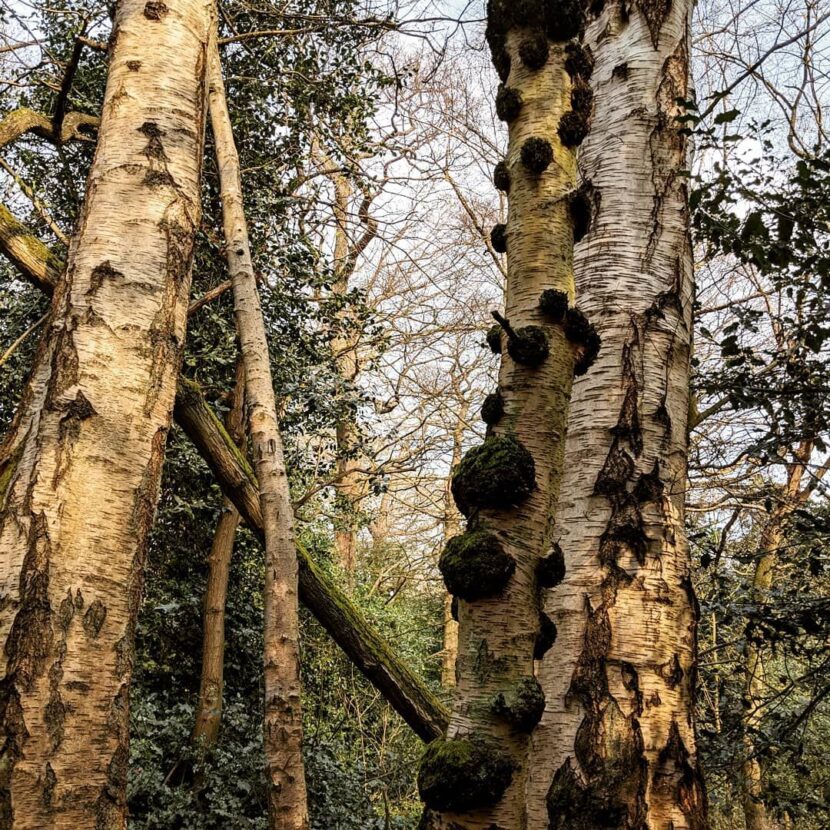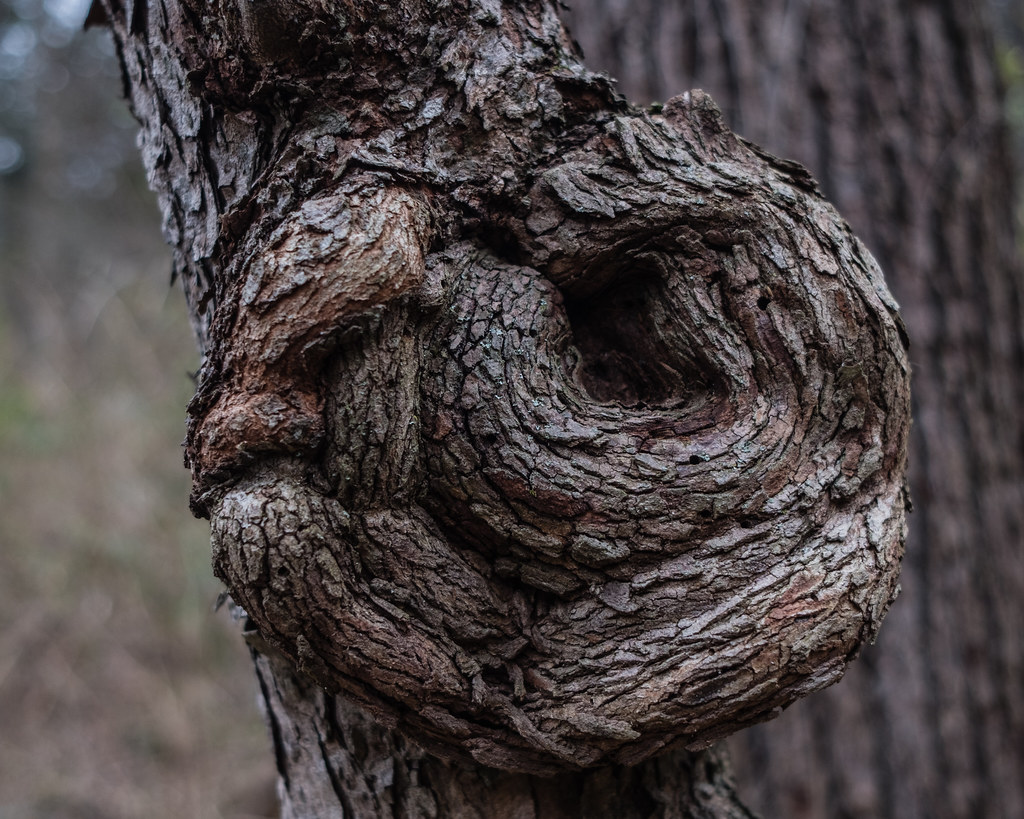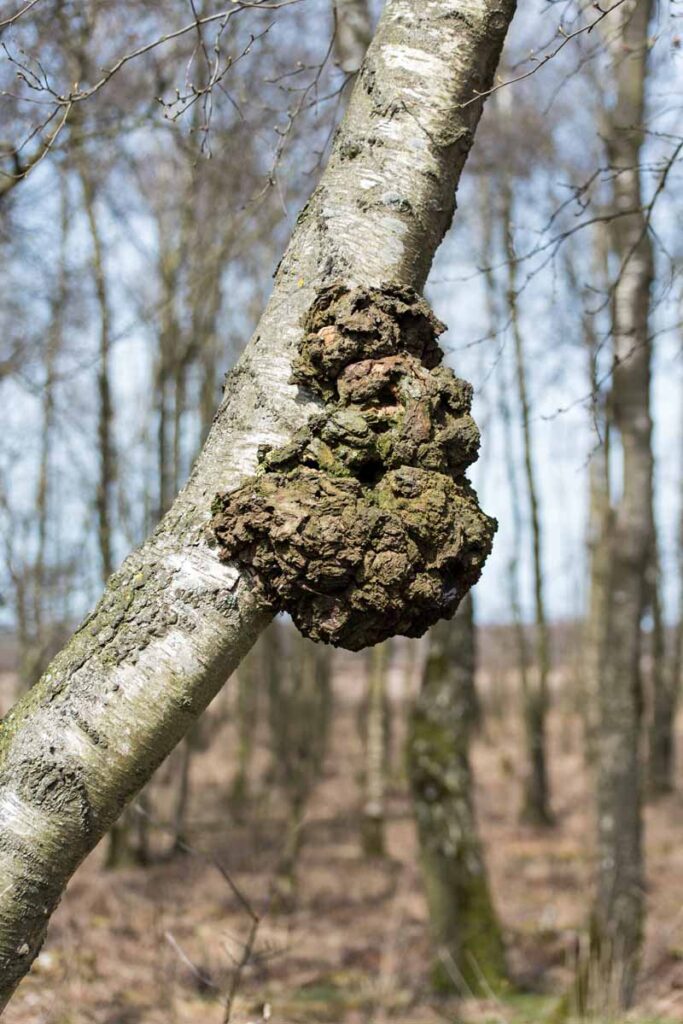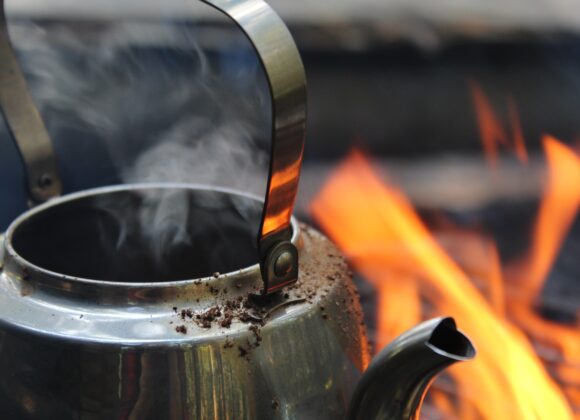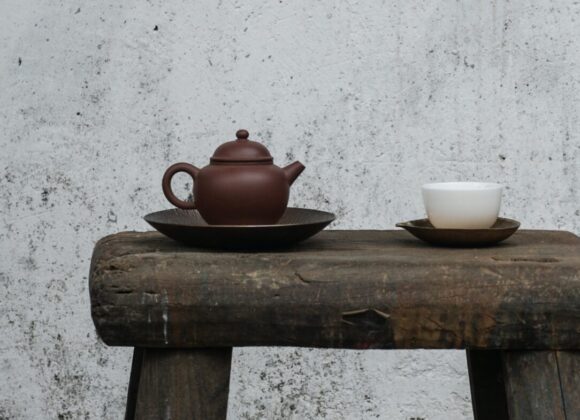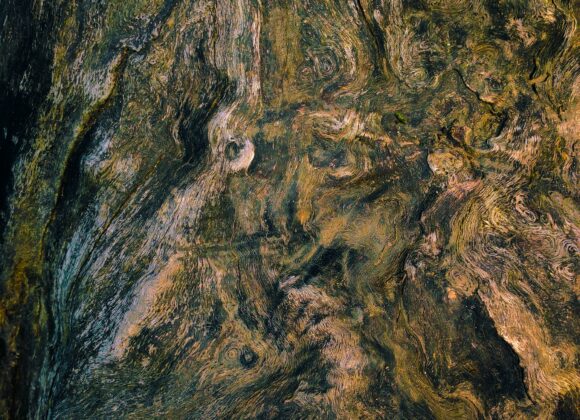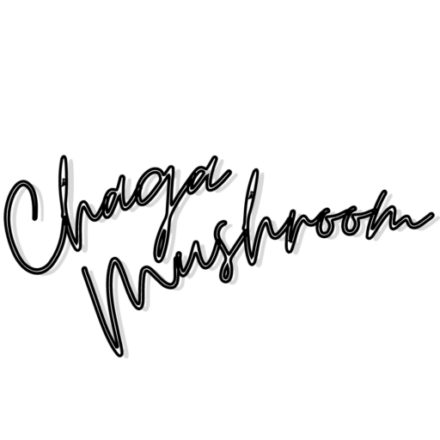Chaga grows on living trees, but it is parasitic. This means that the fungal mycelium enters the stem of a mature tree through a fracture or a wound in the bark and starts to absorb/synthesize healthy compounds. Antioxidants and Betulinic acid are two properties found in birch that give Chaga its potent benefits. Many Chaga look-alikes, unfortunately, do not contain the same health benefits as Chaga.
The fungus will continuously eat the flesh of the tree as it softens or weakens until it reaches its decaying state called ‘trunk fracture.’ The fungi eventually deteriorate the tree inside and out. You’ll know a tree is ‘infected’ with Chaga if the conk is visibly noticed breaking the surface of the tree. The conk is thriving if it sticks out from the side of the tree.
There are a few other tumor growths that Chaga can be mistaken for, like gnarls and burls. These Chaga look-alikes are not safe nor healthy to consume.
What trees does Chaga grow on?
Many Chaga mushrooms are found in regions like Finland (where Chaga is called Pakuri), Estonia, Russia, Kazakhstan, South Korea, Belarus, Canada, Scotland, and North America as other Eastern and Northern European countries.
These Mushrooms grow best on the outside of yellow and white birch trees. But there are cases of Chaga being thought to grow on trees like oak, cherry, beech, alder, and poplar. Studies have not been done to investigate the contents of Chaga from these trees. However, we can assume that because many of the beneficial compounds found in Chaga are unique to birch trees, harvesting them from other species will not have the same health benefits.
Chaga is abundant in the northern hemisphere, where there’s higher forest altitude, as the northern deciduous forests. This species of fungi thrives in cold, damp conditions and has an excellent tolerance for surviving brutal winters.
Chaga look-alikes
Most often, Chaga is found on Paper birch (Betula papyrifera), Yellow birch (Betula alleghaniensis), and Heart-leaved paper birch (Betula cordifolia). It is not always easy to spot due to its black camouflage surface, which blends in with the black and white birch bark. The most common height range between which Chaga likes to plant itself is 2-10 meters.
Birch Gnarl, Burls, and Chaga
Birch gnarl and burl are tumors on birch trees that are considered Chaga look-alikes. Though they don’t have the same health properties, these tumor growths are popular among woodworkers for their beautiful texture.
Three ways to differentiate Chaga from look-alikes gnarl and burls:
Difference #1: Exterior
It’s easiest to differentiate them by the exterior. Birch gnarl is relatively smooth and has the same color as the tree. Burls are round to irregular bumps or bulges that develop on tree trunks. The unusual swirling grain pattern found in burls makes them prized by woodworkers. On the other hand, Chaga will always have a dark black, burnt-looking exterior and more likely an unusual shape.
Difference #2: Removal
Birch gnarl and burls are part of the three, meaning they’ll be tough to remove. Whilst Chaga can be easily cut with a little ax or a knife.
Difference #3 Interior
If you’re still unsure whether you’ve found Chaga or its look-alike, the final confirmation will be the inside. Unlike the tumors formed from wood, Chaga will have an unmistakable golden-orange color and a corky feel.
2. burl on a birch tree (round or irregular bumps)
Where to harvest Chaga?
Chaga absorbs pollutants around it, so it’s important to avoid polluted areas like busy roadsides and forests close to factories, cities, and railroads. The deeper to the forest you go, the higher the quality of your mushroom, meaning the more health benefits you’ll gain.
Chaga will only stay alive and sterile whilst the host tree is living. This means that once the birch tree has died, the mushroom has died and will only develop fruiting bodies to start another life cycle. That’s why trusting your supplier’s integrity to provide living, and high-quality Chaga is very important.
During the growing seasons, you can tell from the tree’s leaves. However, if you’re finding it hard to distinguish a dead tree, look for the following signs:
- No winter buds or leaves
- Many mushrooms on the tree
- Big rotten branches, with a portion of them falling off
- The tree is less hard (test it by touching and knocking on wood)
RELATED: How to harvest healthy Chaga?
How to harvest Chaga sustainably?
For us to keep using Chaga, the fungus needs to be harvested sustainably as it can take up to 20 years for it to mature. Sustainable harvesting of Chaga means that 40-50% of the fungus will be left on the tree.
Unfortunately, many bigger companies are irresponsibly damaging the trees in the forest to harvest Chaga and selfishly taking the entire piece of Chaga they find, leaving the once thriving and beautiful birch tree to die. That’s why we encourage people to research the companies they wish to purchase from.
If you decide to go Chaga “hunting” yourself, use the proper tools. A sharp hatchet will help to cut off pieces of the mushroom without damaging the tree. Remember that only 3 small chunks of Chaga last you months of use. Don’t forget; you can re-use the chunks 6 or more times. An indicator for this is to keep using them in hot water until the water turns clear.
How to access Chaga’s health properties?
Chaga is a hard, dense polypore mass that’s properties need to be extracted. The extraction requires prolonged simmering or soaking. This process makes the beneficial components bioavailable to the human body – meaning the body can absorb the nutrients.
Whilst consuming raw Chaga does no harm other than potentially causing slight digestion problems, it does no good to your body.
Traditionally, the polypore is broken into small pieces, then boiled to make tea. The fungus is removed before drinking the tea. It is also commonly finely powdered and mixed into liquids. As well as combined with binders to make a salve or medicinal application.
RELATED: Key things to know about Chaga


